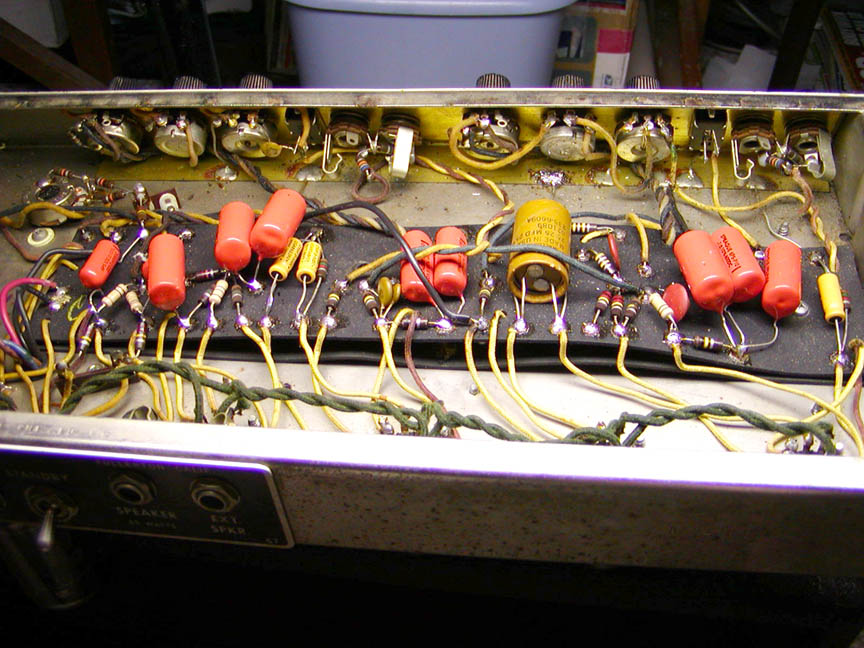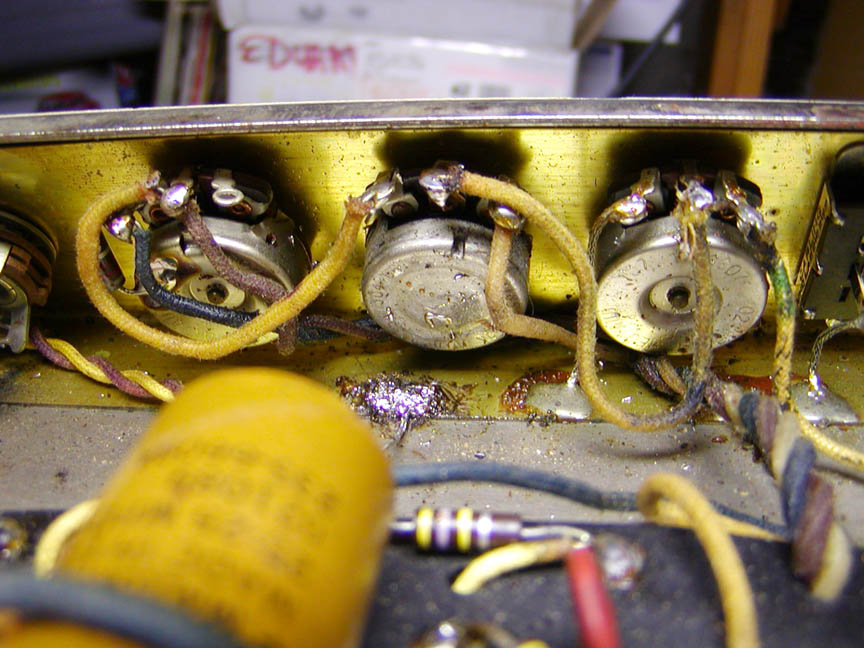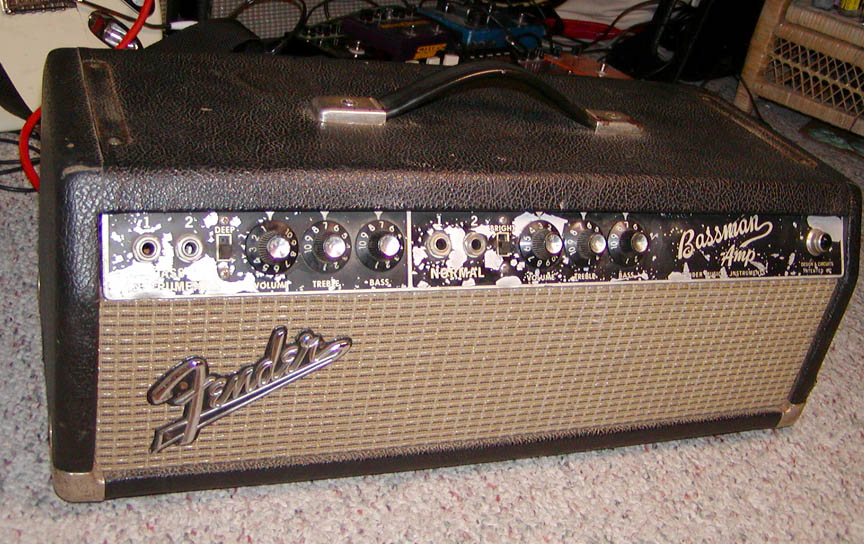I picked up this Bassman head about 4 months ago & finally got around to addressing some of the problems.
There was a noisy "ssssh pop, shhhh" going on some of the time, & the usual remedy was hitting the head to make it stop for a while. I ordered new filter caps & tubes, although I forgot one of the caps.
After changing the tubes, the noise was still there. The whole head is very microphonic, & I found that the bass channel's wiring to be extremely sensitive when tapping with a wooden stick.

The funny thing is, when I turn the bass channel's volume all the way up, the noise goes away.
When plugging into the bass channel, there is heavy distortion happening at 3 & above, totally unlike the normal channel. I realize the 2 channels are voiced differently, but more distortion on the bass channel?
Here is an overall view of the circuit board as well as a detail of the bass channel's controls. If more detailed photos are needed, let me know.


Also, when touching up some solder joints I saw that the resistors would bubble where the wire went into the brown (bakelite, phoenolic?) resistor bodies. Does this mean that they should be replaced?
Thanks,
Steve
There was a noisy "ssssh pop, shhhh" going on some of the time, & the usual remedy was hitting the head to make it stop for a while. I ordered new filter caps & tubes, although I forgot one of the caps.

After changing the tubes, the noise was still there. The whole head is very microphonic, & I found that the bass channel's wiring to be extremely sensitive when tapping with a wooden stick.


The funny thing is, when I turn the bass channel's volume all the way up, the noise goes away.
When plugging into the bass channel, there is heavy distortion happening at 3 & above, totally unlike the normal channel. I realize the 2 channels are voiced differently, but more distortion on the bass channel?
Here is an overall view of the circuit board as well as a detail of the bass channel's controls. If more detailed photos are needed, let me know.


Also, when touching up some solder joints I saw that the resistors would bubble where the wire went into the brown (bakelite, phoenolic?) resistor bodies. Does this mean that they should be replaced?
Thanks,
Steve








Comment